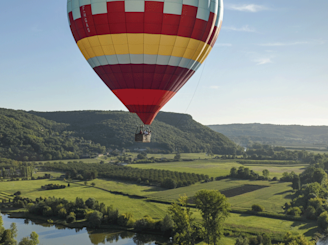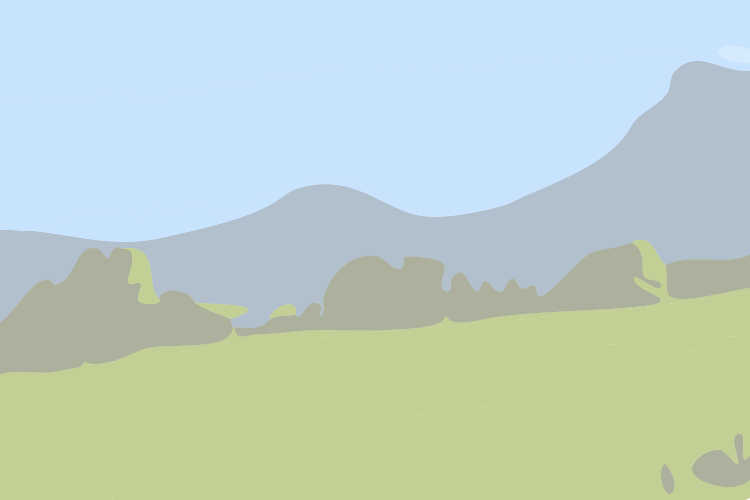Virtual tour of Lascaux
Olivier Chateret has an undying passion for his job and for Prehistory. A native of Azerat, a few minutes from Montignac, he studied communication in Paris and Manchester, spent nine years in Rio, in Brazil, then headed back to settle in his home village two years ago.
To begin with, he was a seasonal guide at Lascaux II, then joined the first team of resident-expert-guides at Lascaux 4 following solid, comprehensive Prehistory and cave art training.
He shares his knowledge of the cave in French, English, Spanish and Portuguese with incredible feeling… “None of us proposes the same tour,” he states, “we’ve all got our own favourite art-works based on their meaning and our understanding of them.” Among his preferred paintings, he cites the Black Stag Bellowing, at the entrance to the Axial Gallery, the atmospheric frieze in the Hall of Bulls and the Upside-Down Horse in the Lascaux Studio.
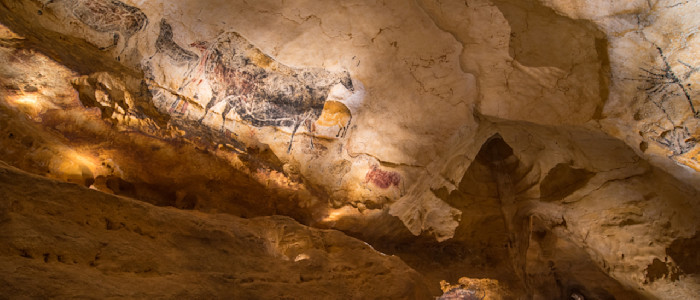
The Black Stag Bellowing
At the entrance to the Axial Gallery, Olivier Chateret points out a specific animal. “This stag, with surreal antlers, epitomizes the artistic spirit of the cave,: the attention to detail on head, the rectangle, the dots... Right beside us (the gallery is narrow), there’s a sequence which radiates great strength. We have to let our feelings do the talking and accept the limits of our understanding.”
The Imaginary Gallery
“In this cave art gallery (the art found on the walls of caves geographically identified in the Cantabrian Range 10,000 to 40,000 BCE) has been reproduced from Prehistory to our modern-day period, around universal, timeless themes (spirituality, large animals, etc.),” states Olivier Chateret. “The art created 20,000 years ago has forever influenced art. And the technology used here in this gallery, which offers visitors the opportunity to create their own exhibitions at will, once again illustrates Lascaux’s modernity.”
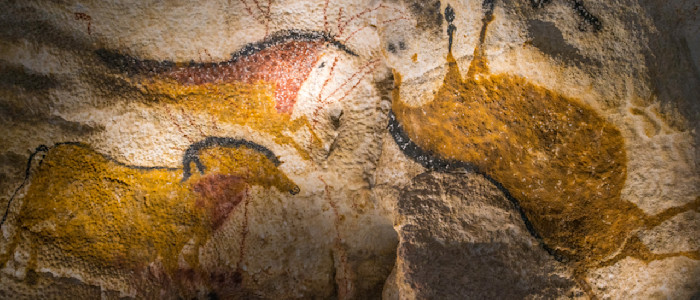
The Upside-Down Horse
In Lascaux Studio, “On the high-tech modules, where the cave's various rooms are deciphered, the horse is totally visible,” states Olivier Chateret. “But this isn’t so in the cave itself: visitors can only see the front or the back. And, for those who painted the horse, it was exactly the same, yet the morphological scale is perfect. This implies two things: first of all, that our ancestors had a great sense of geometrics and, secondly, that they communicated with each other using constructed, articulated language... We’re a far cry from the film “Quest for Fire”! But that’s not surprising as we are the painters of Lascaux.”
The Atmospheric Frieze
In the Hall of Bulls, Olivier Chateret shows us more stags. “This frieze showcases Lascaux’s modern image. The artists used the following process: the first animal is very vivid. As for the others animals, the further away they are, the more out of focus they become... Some are only suggested through two or three lines and the rock’s relief. Imagine... 17,000 years ago, our ancestors knew all about perspective! This process was not used again until the Italian Renaissance painters.”
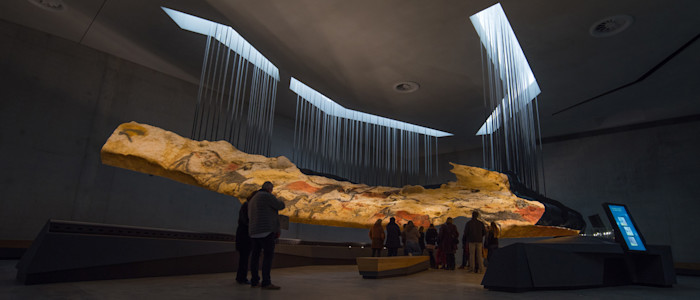
Discovery Moments
“To answer visitors’ questions, an expert guide is on-hand in each of the rooms surrounding the cave replica. You can also spend twenty minutes with a guide to go into greater detail on the following themes: space and time, signs and objects, imagination and, last but not least, rare and dangerous animals. The meet-up point is in the Studio (Hall of Bulls).”
PRACTICAL INFORMATION
The International Centre for Cave Art, in Montignac, is open daily, in the summer, depending on the dates, from 8am to 9pm/9:30pm and from 8:30am to 8:30pm; For other periods please refer to the website.
- Rates: €20 for adults, €12.90 for children aged 5-12. No charge for children under the age of 5. Special-rate 3-site combination tickets which also include Thot Park and the Laugerie-Basse Rock Shelter are also available.
- Contact: +33 (0)5 53 50 99 10. During summer, we recommand booking your visit online, via the website: www.lascaux.fr

